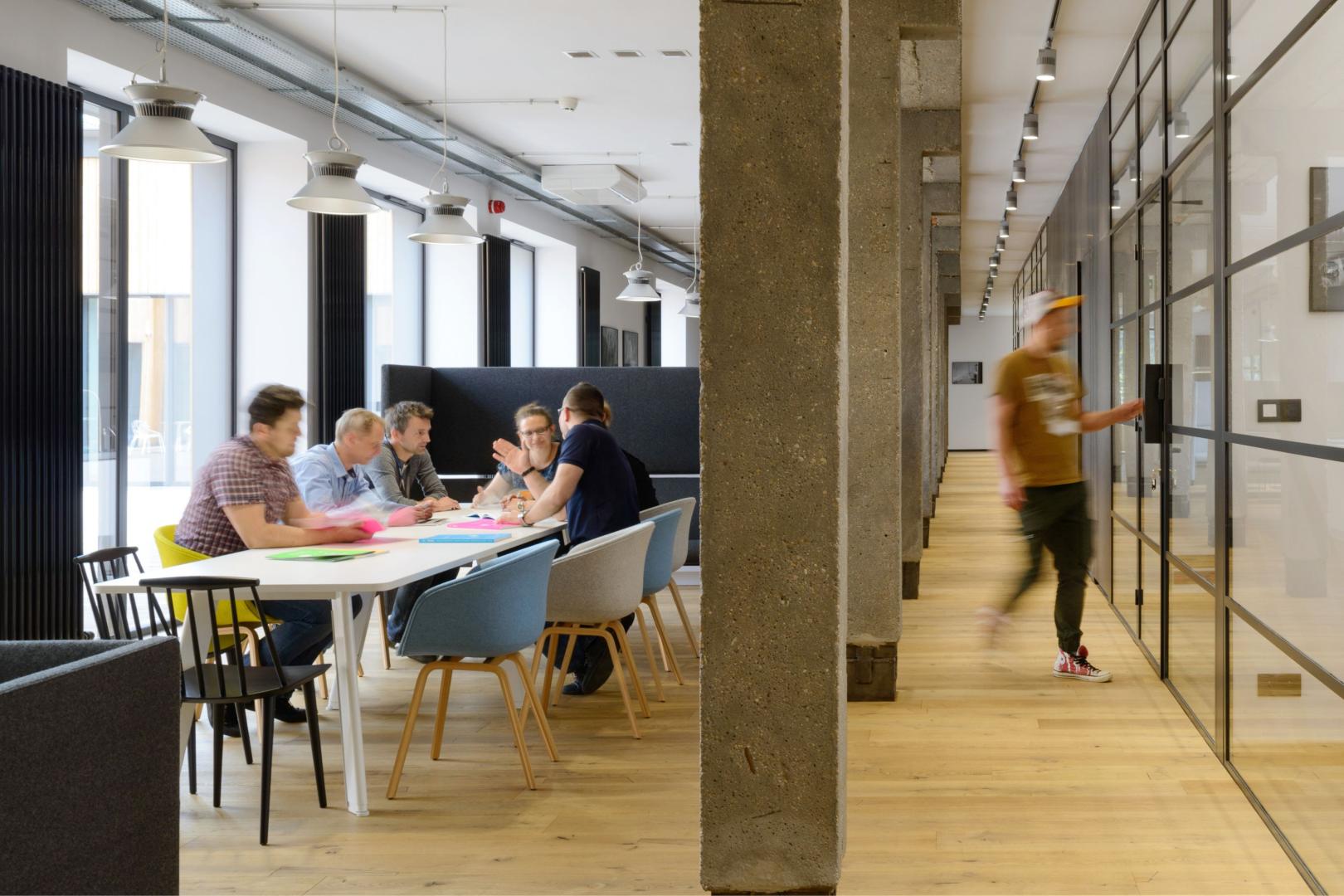Teamwork has been with us since early childhood. Teachers at school group students together and assign them tasks to complete collectively, mainly to get them used to working with others. High schoolers learn about the benefits of this method of achieving goals. University students, especially in certain fields, are required to dive even deeper into the topic, exploring academic theories in the field of management studies. And then what? Nothing.
Why is it worth supporting teamwork in a modern office?
A young person starting their professional career has every right to feel disappointed. Instead of engaging in creative exchanges, friendly confrontations of differing viewpoints to find the best solution, or sharing knowledge and experience, they often end up in a rigid, hierarchical organization. Being noticed in such a structure is already a feat, and climbing the ladder to a spectacular promotion is reserved for the most relentless—often in the worst sense of the word. As if all those insightful books on team management never existed. As if the subject wasn’t taught at universities or MBA programs.
Alright, we wanted to shake the reader up a bit by painting a bleak picture of Polish companies. In reality, things aren’t quite that bad. To be precise—while there’s still work to be done, we’re seeing positive trends. Leaders of modern companies are treating their employees more seriously, implementing genuine partnership models, and well-organized team projects are a great example of that shift.
Teamwork is not exclusive to creative agencies
Contrary to popular belief, teamwork in the office isn’t exclusive to so-called creative industries—such as advertising agencies, media companies, or design studios. Nor is it limited to places where group decision-making is a given—like medical boards or legal teams.
Much depends on the leader’s approach. It’s up to them whether a modern, more collaborative work model appears in the accounting department or even in a government office. And it’s definitely worth investing in teamwork because it delivers real benefits.
Advantages of teamwork in a modern office:
- enables task and responsibility sharing,
- increases efficiency—teams work faster than individuals,
- draws from collective knowledge and experience,
- inspires new solutions,
- builds relationships and fosters a positive atmosphere.
Well-designed collaborative workspaces support cooperation, speed up processes, and offer educational value. Just as importantly—they promote professional growth and help build stronger, more integrated teams.
Modern office spaces support collaboration
Teamwork in open-plan offices is now standard in large organizations and is increasingly adopted by smaller companies and public institutions as well. Experience shows that you don’t need special meeting rooms to foster collaboration. All it takes is a well-designed shared workspace located near individual desks.
This kind of office layout shortens the distance—both literally and figuratively. And if the space is cozy and welcoming, it encourages people to engage. Interior designers more often choose natural materials, soft fabrics, and calming yet energizing colors.
What kind of office furniture supports teamwork?
Mobile office furniture is playing an increasingly important role—it allows for quick reconfiguration of spaces for meetings or collaborative tasks. Examples include height-adjustable tables, lightweight poufs, and small tables from the Plus collection. In more formal interiors, the Minimus desks and tables work well—they allow for comfortable, functional arrangements suited to both focused individual work and dynamic teamwork.
Minimus mobile high table, design: Piotr Kuchciński
Not all teamwork is scheduled in advance. That’s why furniture mobility is crucial. In such moments, wheeled tables, mobile stools from the Pung collection, or even a small podium for spontaneous, creative gatherings can make all the difference. With functional pieces like these, you can instantly create a flexible collaborative workspace that encourages idea sharing and accelerates decision-making.
Pung collection, design: Piotr Kuchciński

